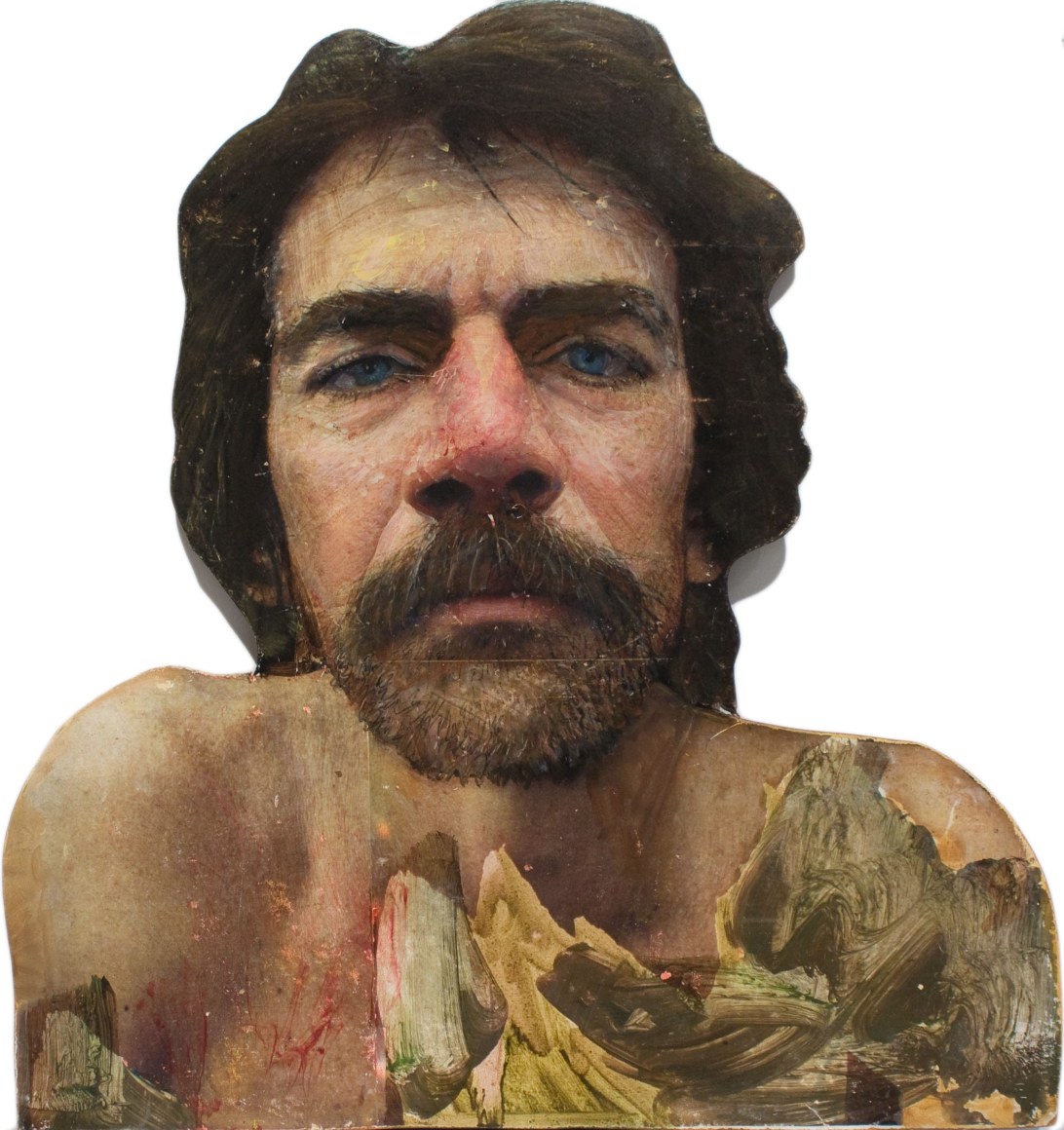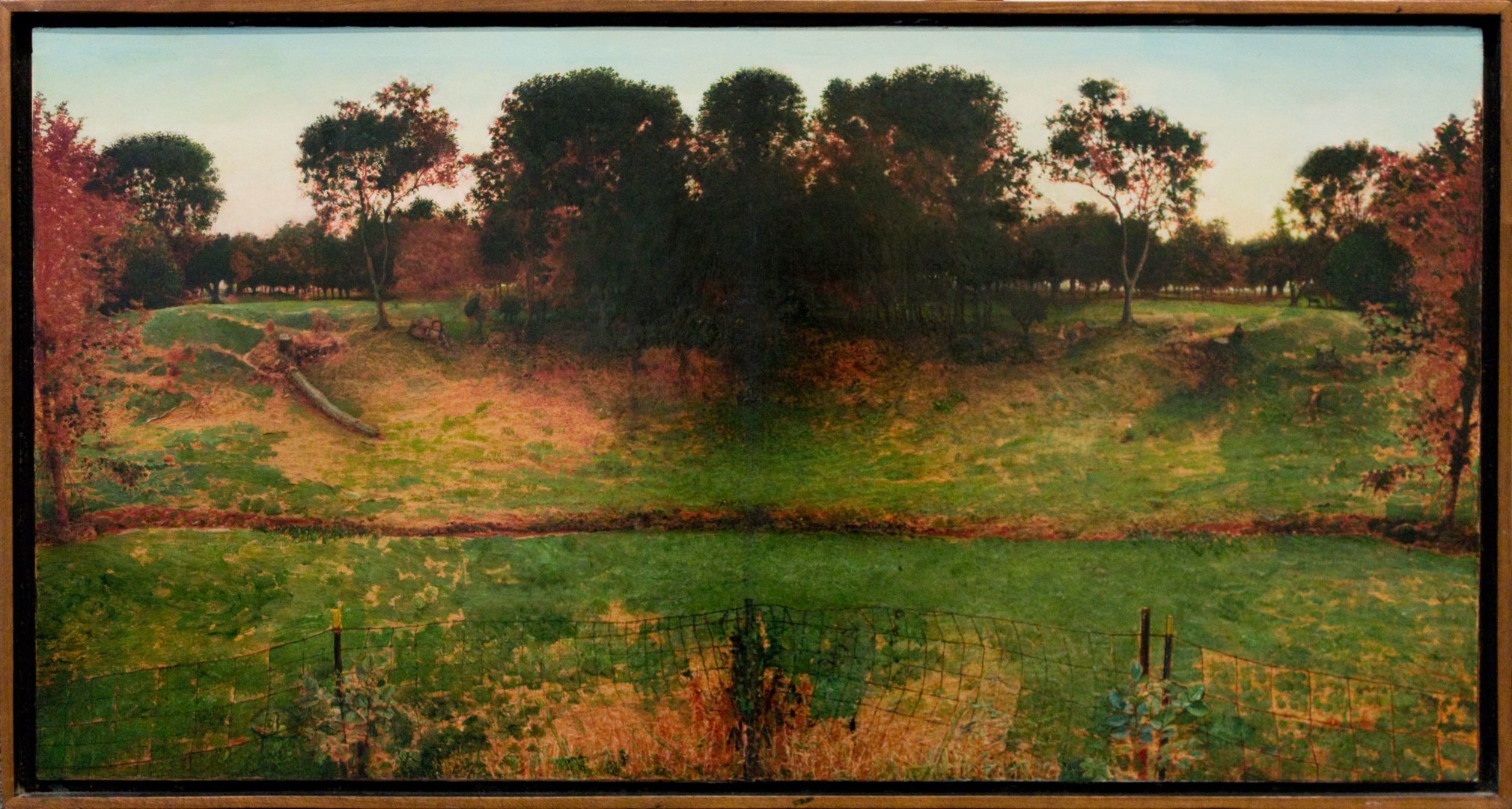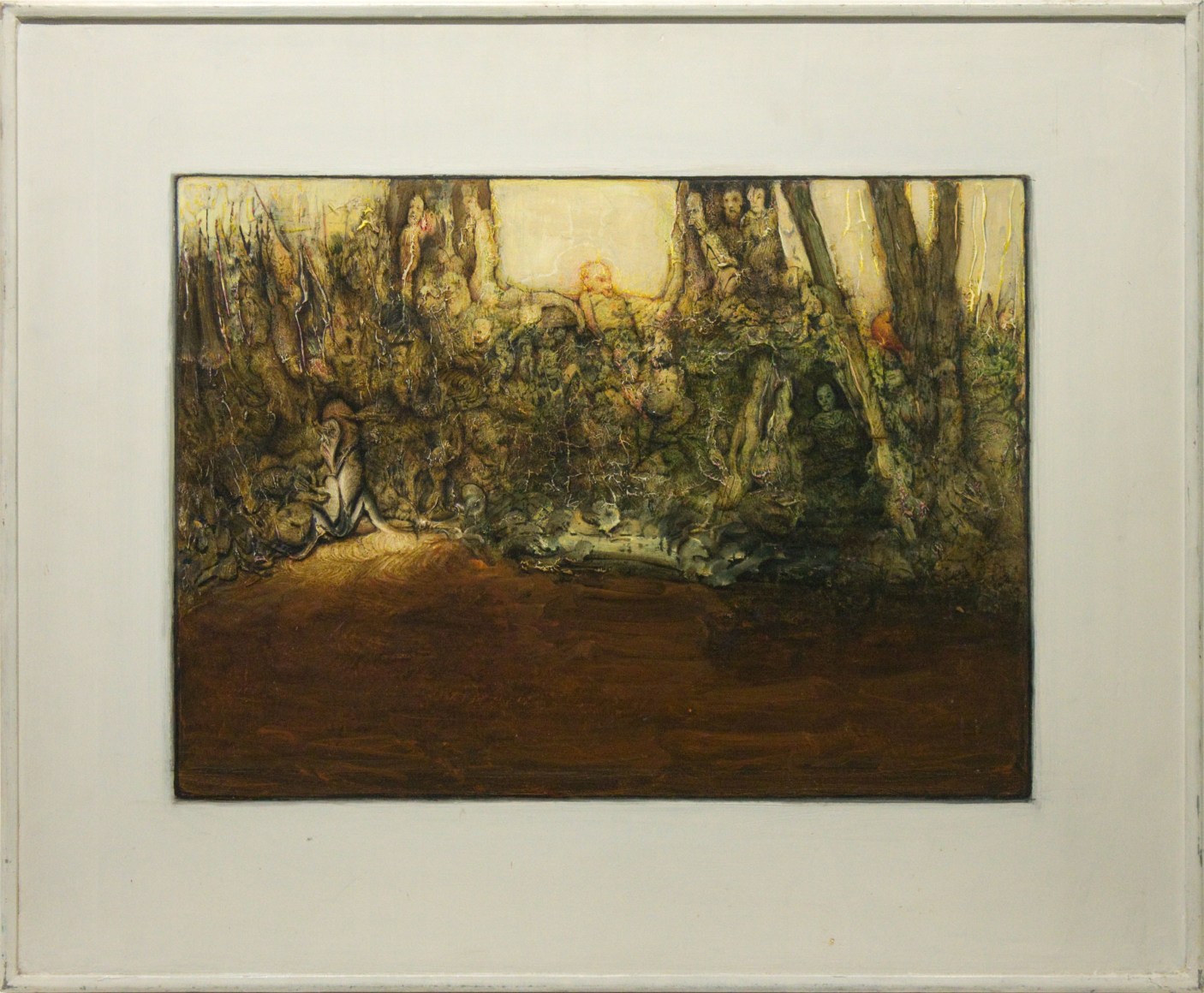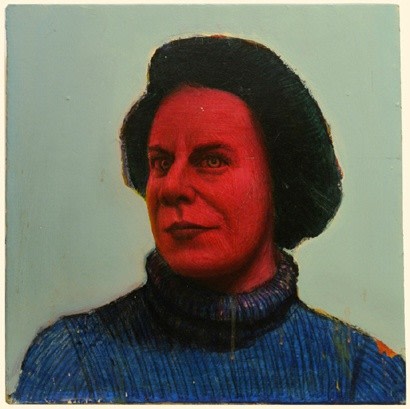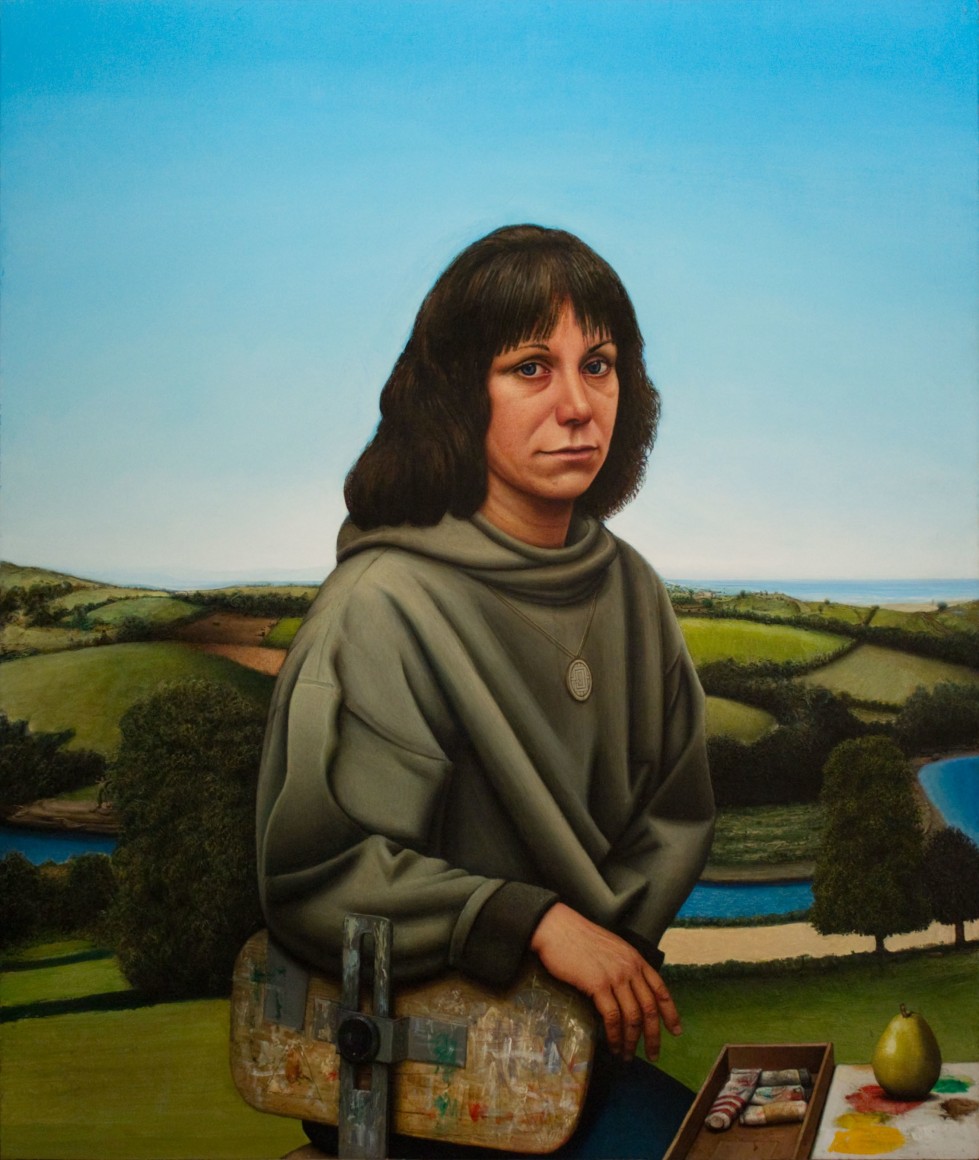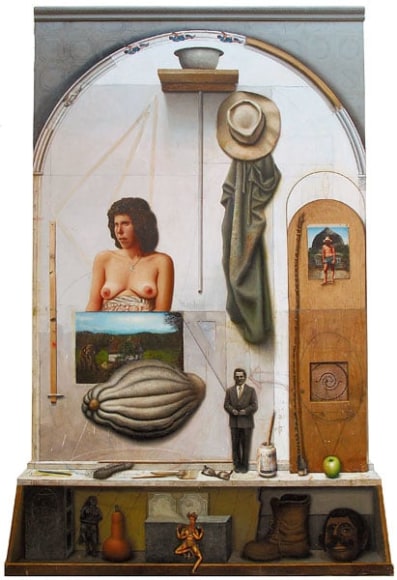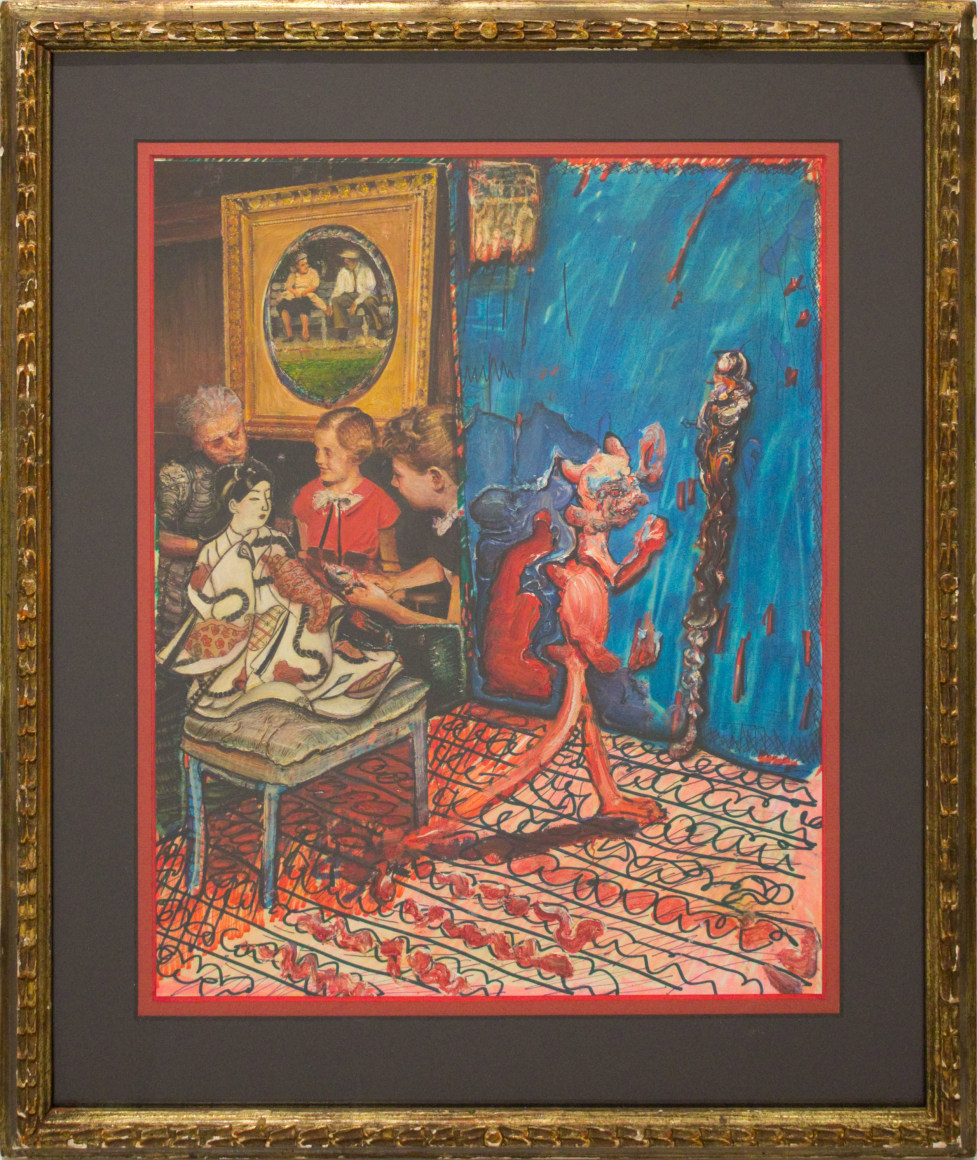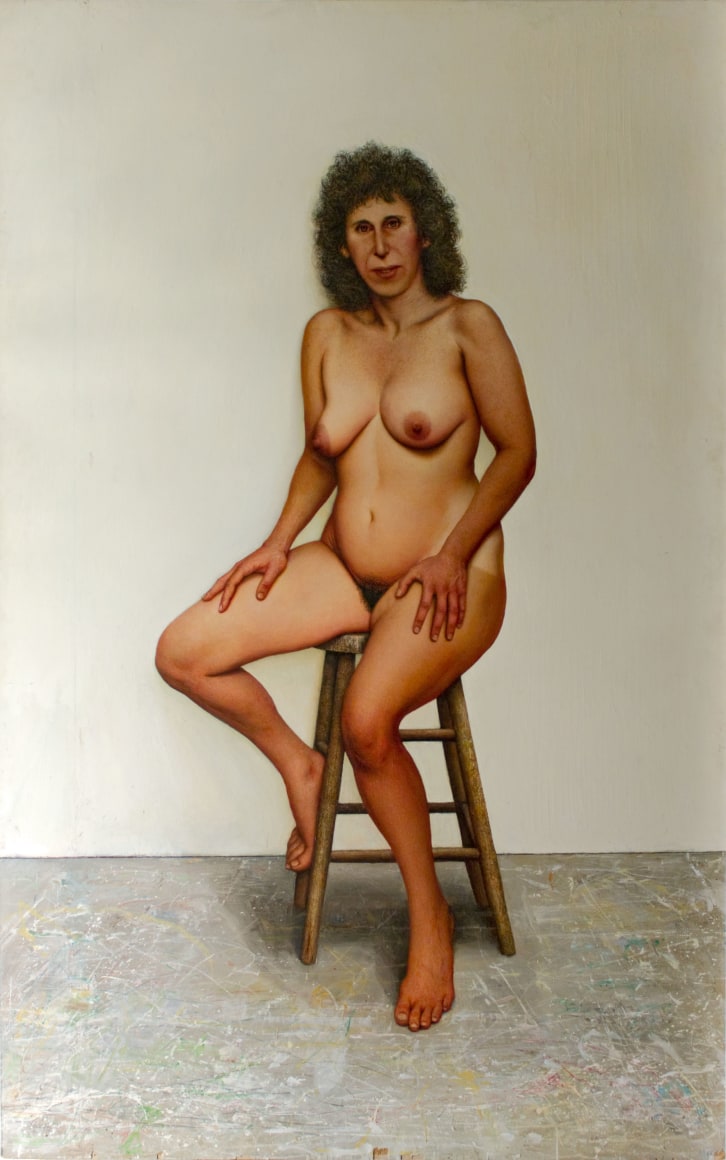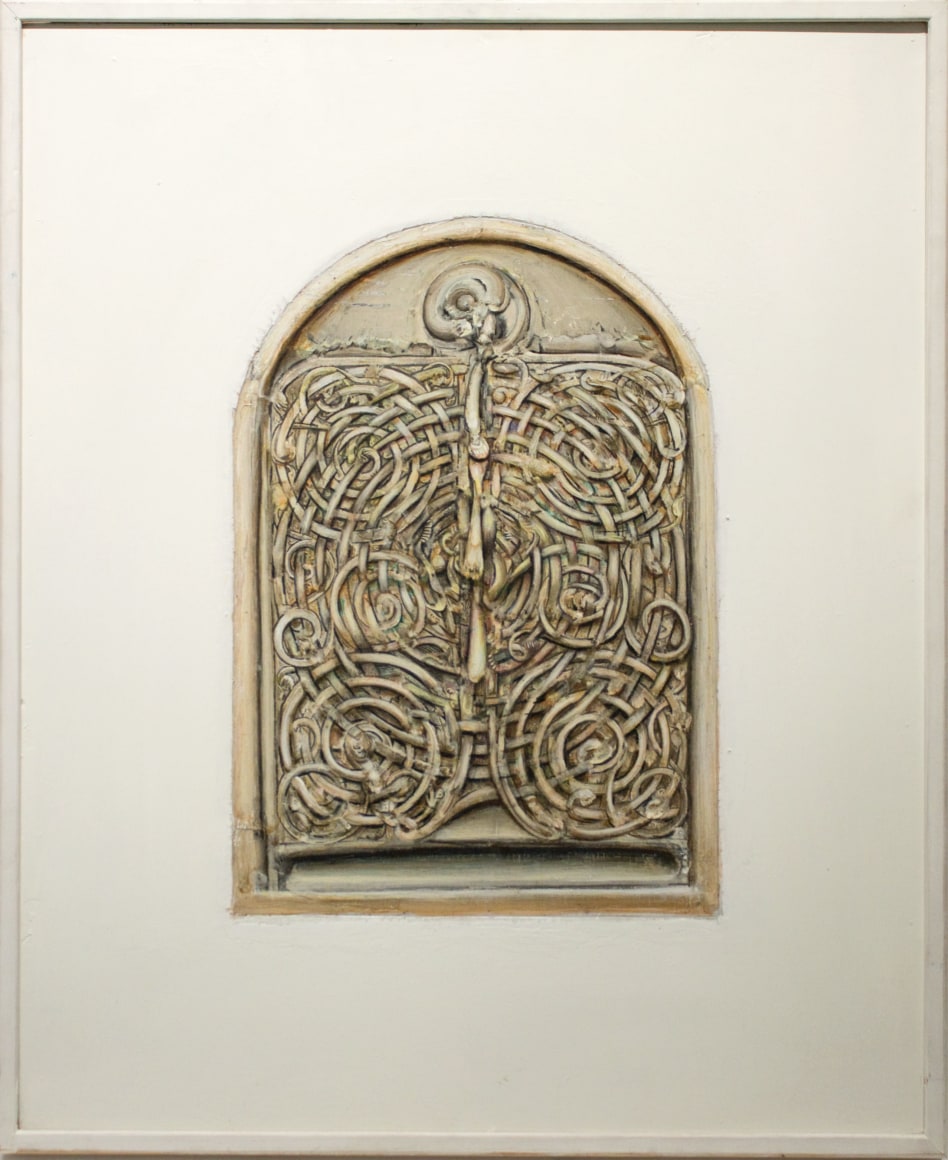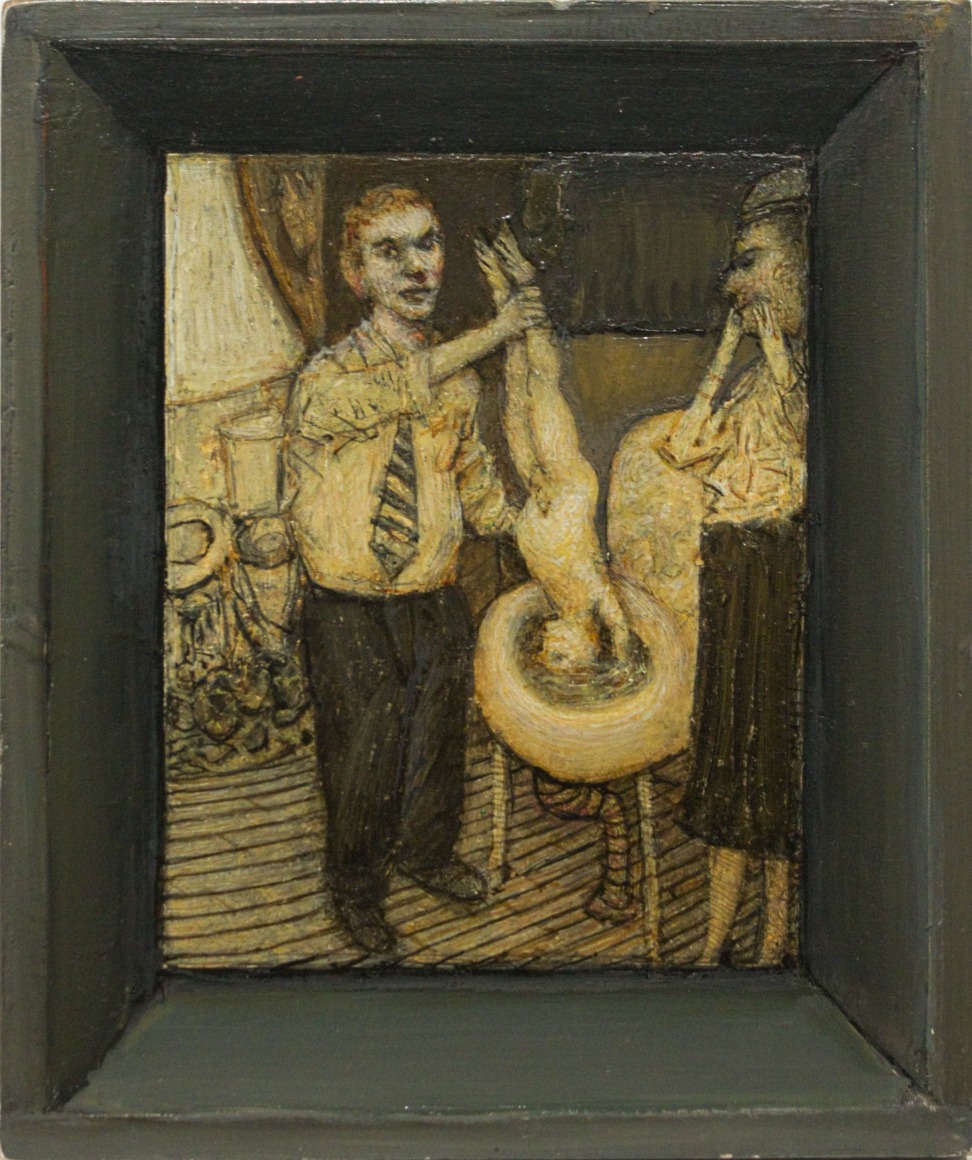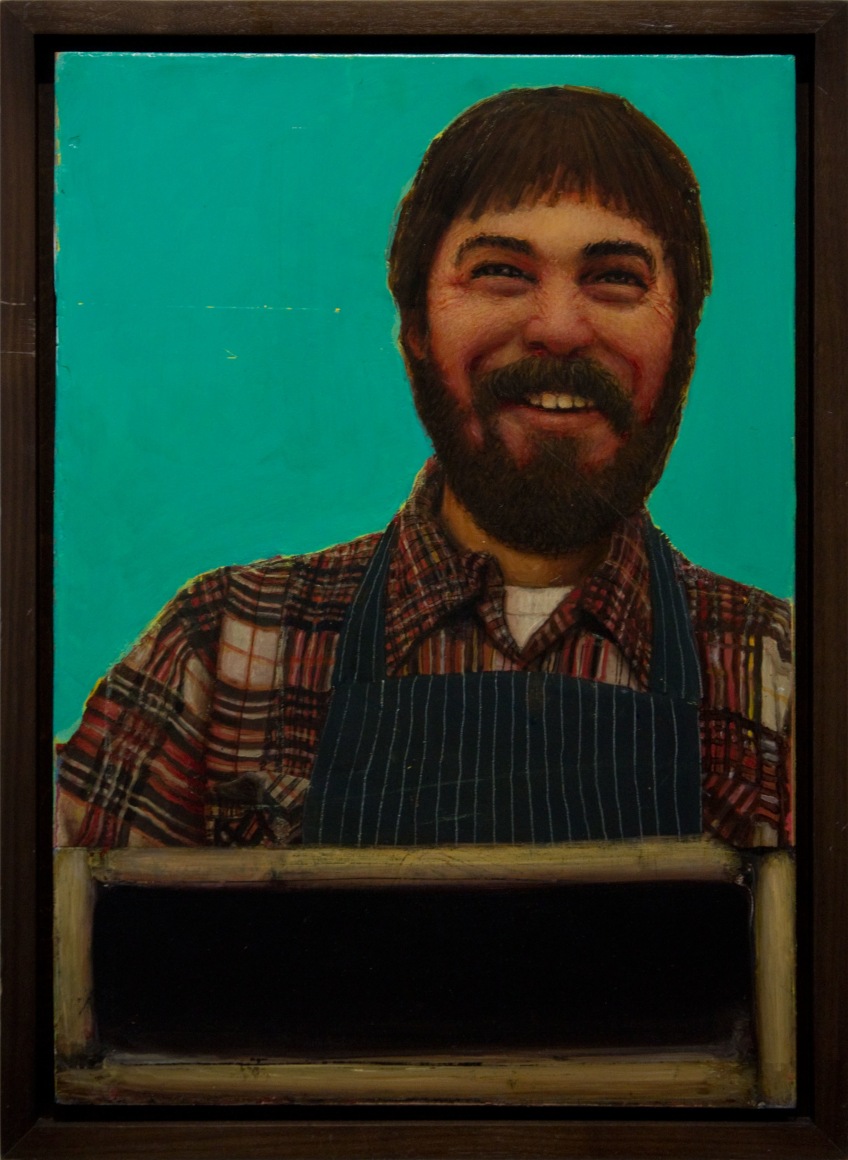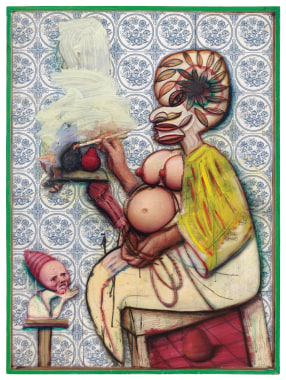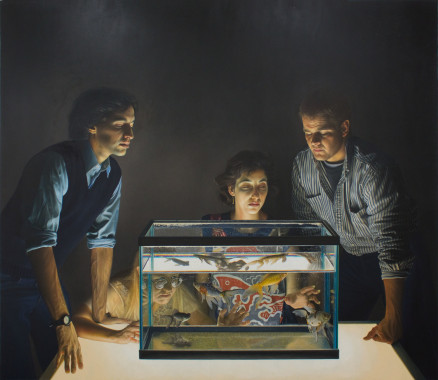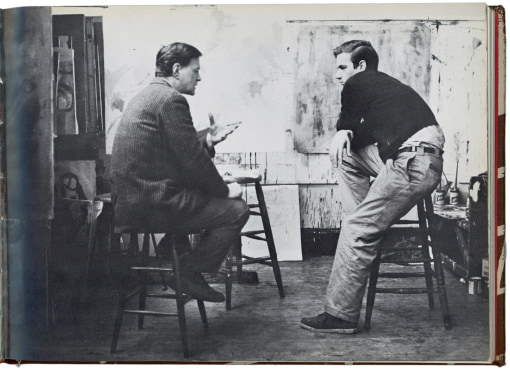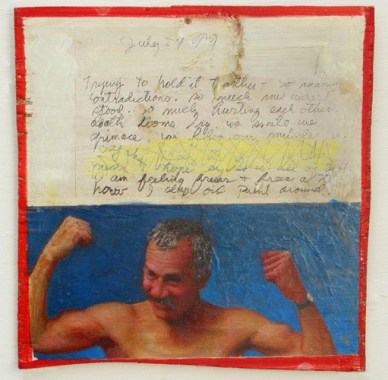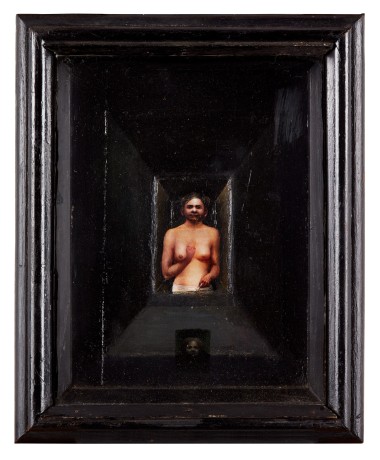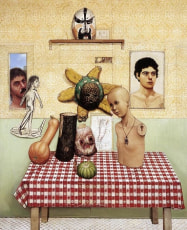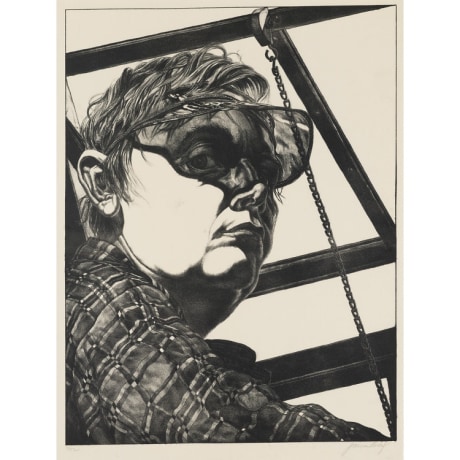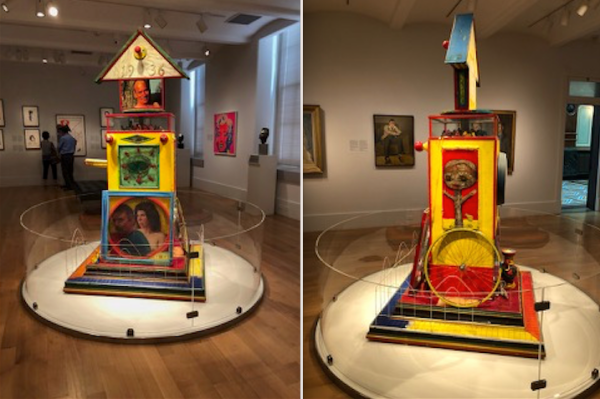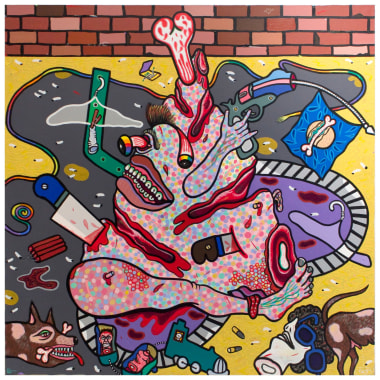
Gregory Gillespie (1936-2000) was one of the leading American figurative painters of the past 50 years, long admired for his immaculate technique and idiosyncratic tendencies. In the catalog for his first retrospective exhibition at the Hirshhorn Museum in 1977, curator Abram Lerner wrote, "[Gillespie's] work abounds in disturbing variations of reality which mirror our normal experiences but transform what is hauntingly familiar into an alarming blend of hallucinations and sharp observation." Born and raised in New Jersey to a strict catholic family, Gillespie went on to attend Cooper Union, where he received his BFA. Rather than stay in New York, he joined the MFA program at the California School of Fine Arts, in the midst of the burgeoning Beat movement.
After graduating in 1963, Gillespie traveled to Italy where he lived and worked with the support of various grants for several years. That experience proved formative and the influence of classical Italian painting is evident throughout his work, with painters such as Masaccio and Carlo Crivelli often mentioned among the artist's favorites. In contrast to his looser student work, he developed a meticulously rendered style, layering a combination of materials to give his paintings an eerie realism. To build on this effect, he also began incorporating photographs into his paintings, often magazine cut-outs or family snapshots, as the underpinnings of his tableau. Though in the broadest terms these are ostensibly quotidian - kitchen tables, bedrooms, street scenes and landscapes - his paintings abound with bizarre details and symbols, bordering on allegory.
Following his return to the States in 1971, Gillespie settled in the Northampton, Massachusetts area, eventually becoming affiliated with the loose group of realist painters in the region. With a burgeoning career and gallery representation, his work became more ambitious in scale and subject. It was around this time he began painting portraits and self-portraits, subjects he would return to continually and would define his career. Gillespie has been grouped at various times with realists, surrealists and magical realists, though his output continues to defy easy categorization. Yet he was also a virtuosic painter who transcended his Realist contemporaries by painting in a manner that was almost hyper-real. In 1992, speaking about the development of his technique, he describes: "At one time, I was fascinated by microscopic detail, by painting the pores of skin... suggesting the undercurrent of molecular energy running through everything... [Now] I'm struggling less with just the mechanics of getting something to look convincing, which frees me up to explore more complex psychological issues."
A word most often used by Gillespie to describe his more esoteric work was “weird” but he also frequently alluded to the urge to create beauty, that in its completed form, a painting would be beautiful, transformed from whatever chaotic source it began from. His process of painting involved heavy re-working of the surfaces as he scraped and sanded away layers of paint, over and over again until the paint took on a life of its own and strange figures emerged. His organic process - in some cases it would be years until a painting was considered finished - plays into the constructed nature of many of the works, literally pieced together in some cases, but using a simple structure to contain a series of vignettes. Gillespie’s self-portraits in particular are evidence of this: though many are direct and contemplative, the most powerful show him in his studio, surrounded by props, tools and other paintings-in-progress. By the early 1990s, spirituality, sexuality and psychology were the primary drivers of his work. While he had long ago renounced the Catholicism of his childhood, the forms and rituals of the religion continued to fascinate and preoccupy him. Many of his later works are in the manner of shrines or altars - a format he had experimented with while in Italy, based on the small, niche shrines found around the cities he lived. A growing interest in Buddhism, Hinduism and other principles of eastern thought were a major influence as well, with mandalas and concepts such as the third eye appearing in his later work.
Gillespie showed extensively throughout his career, including two lifetime retrospectives, in 1977 at the Hirschhorn Museum and Sculpture Garden and in 1999, organized by the Georgia Museum of Art, Athens, which traveled to the Museum of Contemporary Art, San Diego, the List Visual Arts Center at MIT and the Butler Institute of American Art, Youngstown. He was in residence at the American Academy in Rome from 1964-1970 as well as a recipient of a Fulbright Grant and a Louis Comfort Tiffany Foundation Grant, among other awards. His work can be found in the collections of major institutions across the country, including the Hirshhorn Museum and Sculpture Garden, Washington DC; Whitney Museum of American Art, New York; Metropolitan Museum of Art, New York; Museum of Fine Arts, Boston; Virginia Museum of Fine Art, Richmond and the San Diego Museum of Contemporary Art, La Jolla, among others.

